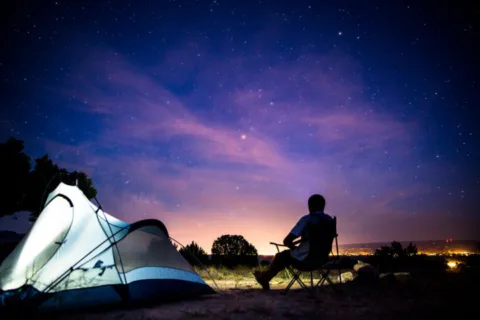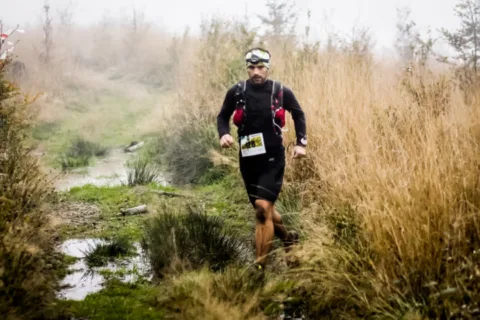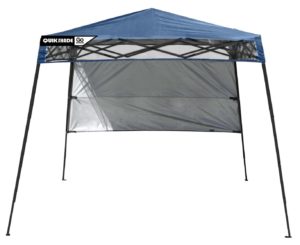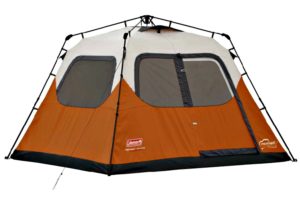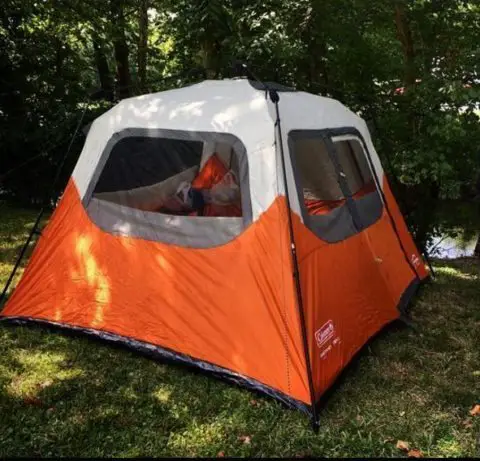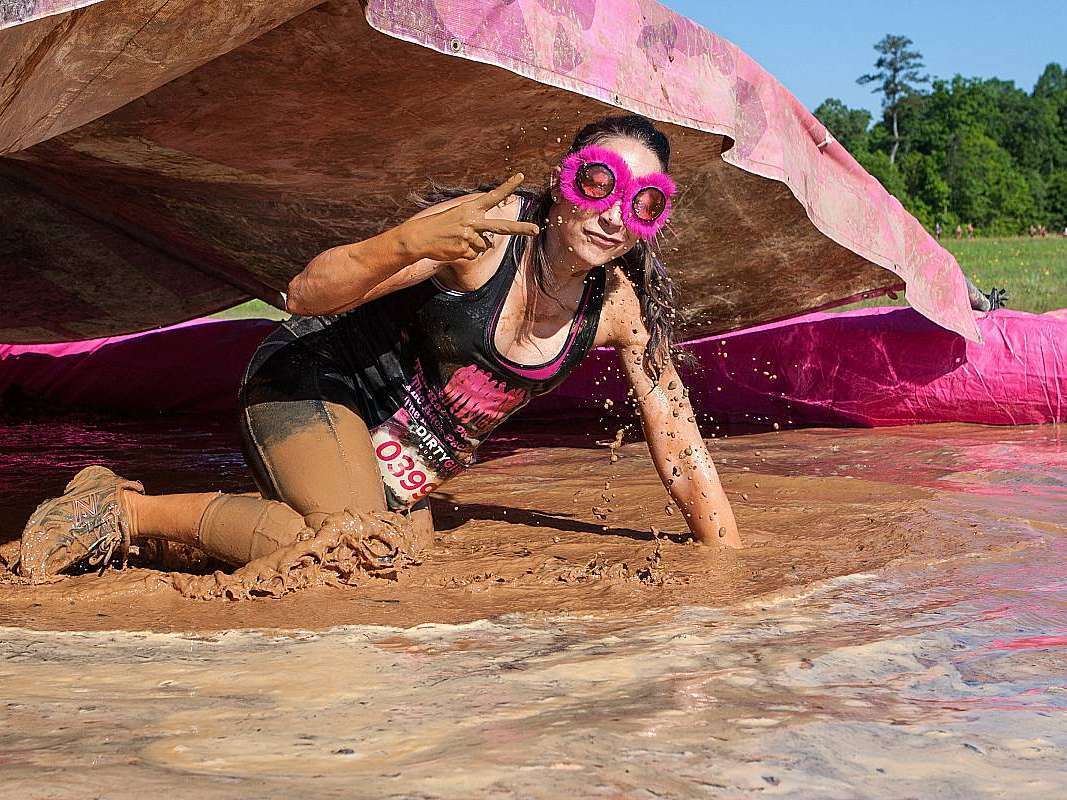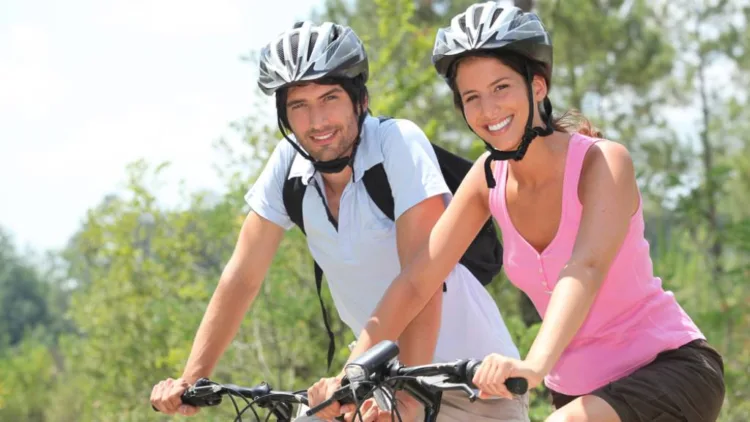Once you get past the 50-mile ultramarathon and into 100-mile, 24-hour, 36-hour or 48-hour ultramarathons, you are faced with the issue of setting up some sort of staging area for your race.
Most of the timed ultramarathons (24, 36, 48-hour) are run in shorter loops — which allows for frequent access to the race aid station and your personal staging area with whatever personal items (preferred foods and sports drinks, change of clothes, various gear/first-aid items, etc.) you brought for the race.
Once you get into timed races that are 24 hours and longer, there is the matter of having your own personal place where you can take a break, sit down, and perhaps even sleep.
Races allow for runners to set up for such places for themselves on the race route. This is when the issue of a tent comes up — as a place to keep all of your trail running gear.
There are a few different options when it comes to deciding upon a tent.
Let’s look at a few…
#1 – Don’t have a tent.
I recently ran a 24-hour ultramarathon and there were heavy rains. I met a couple ultrarunners who were running the 12-hour race, and invited them to place their gear and personal items under my canopy to keep them from getting wet.
If you’re thinking about doing a 12-hour or 24-hour run — even if you’re planning to run the entire time — it’s wise to have a canopy or tent. It can provide a shady spot out of the sun for a short break and keep your trail running gear dry in case of rain.
If you’re running a 12-hour or 24-hour ultramarathon, you are likely to regret just showing up with a cooler, backpack, and chair.
#2 – A canopy is the minimalist option.
Another option is a canopy – an overhead covering supported on poles.
Some ultrarunners decide that a tent is unnecessary and that a canopy will suffice.
The upside to canopies is that they are typically easy to put up. A canopy is easy to get in and out of, but provides sufficient shelter from the sun and rain, and allows for you to create a little place for you and your stuff without getting too complicated about it.
However, the downside of a canopy is that it provides only an overhead covering. I quickly learned during one 24-hour race that a canopy is not adequate protection from the elements. If there’s any wind, during a rain it’s going to get all your stuff wet. Most canopies don’t have any floor covering, and the rain will soak the ground under your canopy and possibly make it muddy.
While an open canopy is easy to get in and out of, you might find yourself wishing you had a more closed-off area to tend to aches and pains, change clothes, or just have a few moments of peace and quiet.
There are some more advanced canopies with a sun wall and a roll-out covering for the ground. But I’ve mostly seen these used as an extra item for a runner who also had a tent. Canopies — especially the more advanced versions — can be a good option, but there are some limitations to consider.
#3 – An instant tent (pop-up tent) is the fastest option.
One of the primary benefits of an instant tent is the ease in which it is put up. This should not be taken lightly.
As an ultraunner you don’t want to show up to a long race and before it starts spend an hour fighting poles and flaps and chords, trying to set up your tent.
One of my tents is a Coleman Waterproof 10 x 9-Feet 6-Person Instant Tent. The poles are pre-attached and takes about 2 minutes to set up. It’s a simple tent but it works to accommodate my gear, a couple chairs, and a place to lay down if necessary.
Though it says it’s a “6-person” tent, keep in mind that once you put in your cooler(s), backpack(s), chairs, and other gear, there isn’t much room left. Realistically, with all that stuff in your tent, it accommodates 2 people comfortably.
#4 – A full-service tent accommodates both you and your support crew.
In 36-hour or 48-hour races, it’s much more likely you will be taking rest and recovery breaks (or even sleep) and will likely want a more spacious tent set-up. It is also more likely that you will have a support crew and will need a larger more family-style tent.
Klondike tents are often used in these situations.
A Klondike tent is a family dome tent with an attached screen room. The benefit of this set-up is that has a front area where you can set up all your personal belongings, coolers, chairs, tables, gear, etc., take breaks, and eat a meal. But then it also has a back tent area where you can have some secluded peace and quiet to rest or sleep.
It’s likely in these longer ultramarathon races that you will have a support crew of 1 to 3 people with you. A Klondike set-up also allows them a comfortable place to be and hang-out — or even sleep if necessary — during your race.
Of course it’s a much more involved set-up, but that’s the point of having a support crew – to help you do things like set up your tent and staging area.
Before You Buy A Tent For Ultramarathons
There are countless choices when it comes to canopies, instant tents, and full-service tents for setting up your staging area for a timed ultramarathon.
Remember, these timed ultramarathons are run on loops — which puts you at your tent every couple miles or so. This is my tent:
There would be other considerations if you were doing a multi-day ultramarathon that was covering a long route from Point A to Point B. In these cases, you would be looking for a tent you could carry – a lightweight 1-person tent.
The main considerations for a staging area tent for a 24-hour, 36-hour or 48-hour ultramarathon are:
- Protection from the elements (sun, rain, storms)
- Ease of set-up
- Ample room/space to accommodate your scenario (alone or support crew)

